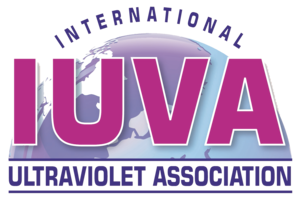IUVA Education Resource Center
Food and Beverage
My Guiding Principles
We will include published books, published critical reviews that feature engineering, microbiological principles and equipment development and validation principles for food and beverages treatment. The selection will be done on citation index and IF of the journals. Regulatory guidelines will be included based on available info from the US FDA, Health Canada and EFSA.
Tatiana Koutchma is Research Scientist, Guelph Food Research and Development Center, Agriculture and Agri-Food Canada / Government of Canada and Co-Chair of the UV for Food Working Group of the IUVA. Dr Koutchma is Past Chair of the Non-thermal Processing Division of Institute of Food Technologies (IFT). She serves as Associate Editor of Comprehensive Reviews in Food Science and Food Safety (IFT), Journal of Food Process Engineering (Wiley), and Food Science and Technology International (SAGE). Dr. Koutchma uses her expertise in emerging (novel) food processing technologies such as high pressure, ultraviolet light, LEDs to initiate and conduct research related to production of food and feed products with extended shelf-life, better quality and safety attributes, to develop risk mitigation processing strategies for pathogens and mycotoxins control, transfer knowledge to national and international governments and industrial partners, validate performance of novel food processes and assess impact of novel processing methods on chemical safety, quality and health attributes of foods.
Documents & Resources
| Sub-topic | Title | Author | Comments | Source | Date | Link |
|---|---|---|---|---|---|---|
| UV rate constant data - Fungi | Effects of UV and phototoxins on selected fungal pathogens of citrus | Asthana A, Tuveson RW | Contains valid UV k data | Int J Plant Sci 1533:442-452 | 1992 | |
| UV rate constant data - Bacteria | Effects of UV irradiation on selected pathogens in peptone water and on stainless steel and chicken meat | Kim T, Silva JL, Chen TC | Contains valid UV k data | J Food Prot 657:1142-1145 | 2002 | |
| UV rate constant data - Virus | Efficacy of Ultraviolet Treatments for the Inhibition of Pathogens on the Surface of Fresh Fruits and Vegetables | Yaun BR, Summer SS | Contains valid UV k data | Blacksburg, VA: Virginia Polytechnic Institute and State University | 2002 | |
| Fluence Concept, Theoretical Evaluation and Practical Validation in UVC Preservation of Opaque Food Liquids and Beverages | Tatiana Koutchma | In book: Innovative Food Processing Technologies Among a few causes of slow commercialization of UV light technology for beverages are the lack of understanding of UV light transmission through opaque media or liquids with low UV light transmittance (UVT) and differences in the approaches of evaluation of UV energy, fluence and dose in this instance, in comparison with well-established approaches in the water treatment industry. Consequently, there are no established practices on validation of fluence or UV dose delivered in continuous systems for treatment of low UVT liquids. This article will discuss the essential differences in water and beverage product characteristics, determination of UV energy, fluence and dose along with critical product and process requirements in order to be considered and applied for successful UVC process development and validation. The essential steps in product and UVC process development will be summarized and need to be addressed to accelerate UV technology commercialization. | 2001/01 | |||
| UV rate constant data - Fungi | Inactivation of conidia of Botrytis cinerea and Monilinia fructigena using UV-C and heat treatment | Marquenie D, Lammertyn J, Geeraerd A, Soontjens C, VanImpe J, Nicolai B, Michiels C | Contains valid UV k data | Int J Food Microbiol 74:27-35 | 2002 | |
| Inactivation of Escherichia coli , Listeria and Salmonella by single and multiple wavelength ultraviolet-light emitting diode | Andrew Green; Vladimir Popović; Jacob Pierscianowski Keith Warriner Tatiana Koutchma | In book: Innovative Food Science & Emerging Technologies This study compared the inactivation efficacy and performance of UV-LEDs emitting at 259, 268, 275, 289, and 370 nm against a low pressure mercury lamp at 253.7 nm for the foodborne pathogens, E. coli, Listeria and Salmonella. Action spectra were determined for three pathogenic and three non-pathogenic strains and compared with UV absorbance of their bacterial DNA. The lethality of UV wavelengths correlated with bacterial DNA absorbance. At an equivalent UV dose (7 mJ·cm−2), UV-LEDs emitting at 259 and 268 nm achieved the highest log count reductions out of the tested wavelengths. Refrigeration (4 °C) increased irradiance of the 268 nm UV-LEDs while not affecting reduction of Listeria compared to 25°C. Combining 259 and 289 nm UV-LED wavelengths at an equivalent UV dose had a synergistic effect on reduction of E. coli and Listeria, yielding a 1.2 and 0.6 log higher reduction, respectively, than the expected additive effect. | 2018/06 | |||
| UV rate constant data - Fungi | Inactivation of food spoilage fungi by ultraviolet UVC irradiation | Begum M, Hocking A, Miskelly D | Contains valid UV k data – food spoilage | Int J Food Microbiol 129:74-77 | 2009 | |
| UV rate constant data - Bacteria | Overproduction of Erythromycin by Ultraviolet Mutagenesis and Expression of ermE Gene in Saccharopolyspora erythraea | Fallahpour, N, S Adnani, H Rassi and E Asli | Contains valid UV k data | Assay Drug Dev Technol 157: 314-319 | 2017 | |
| UV rate constant data - Prions | Purified scrapie prions resist inactivation by UV irradiation | Bellinger-Kawahara C, Cleaver J, Diener T, Prusiner S | Contains valid UV k data on Prions | J Virol 611:159-166 | 1987 | |
| UV rate constant data - Bacteria | Reduction of eggshell aerobic plate counts by ultraviolet irradiation | Chavez C, Knape KD, Coufal CD, Carey JB | Contains valid UV k data – food industry | Poult Sc 818:1132-1135 | 2002 | |
| UV rate constant data - Bacteria | Studies on the irradiation of microorganisms in relation to food preservation | Erdman I, Thatcher FS, McQueen KF | Contains valid UV k data for food preservation | Can J Microbiol 7:199-215 | 1961 | |
| UV rate constant data - Fungi | The fungicidal action of ultraviolet radiation | Fulton HR, Coblentz WW | Contains valid UV k data | J Agric Res 8:159 | 1929 | |
| UV rate constant data - Spores | Transitory UV resistance during germination of UV sensitive spores produced by a mutant of Bacillus cereus 569 | Weinberger S, Evenchick Z, Hertman I | Contains valid UV k data | Photochem & Photobiol 396:775-780 | 1984 | |
| UV rate constant data - Virus | Ultraviolet inactivation and photoreactivation of avian viruses | Deshmukh D, Pomeroy B | Contains valid UV k data | Report nr Sci J Minnesota Agricult Exp Station Paper No 6744 | 1968 | |
| Ultraviolet LED Technology for Food Applications: From Farms to Kitchens | Tatiana Koutchma | September 2019 Ultraviolet LED Technology for Food Applications: From Farms to Kitchens examines the next wave in the LED revolution and its ability to bring numerous advantages of UVC disinfection. As UVC LED-based light fixtures will become the driving force behind wider adoption, with potential use in the treatment of beverages, disinfection of food surfaces, packaging and other food contact and non-contact surfaces, this book presents the latest information, including LEDs unique properties and advantages and the developments and advances made in four areas of application, including produce production and horticulture, post-harvest and post processing storage, safety and point-of-use applications. Alternative opportunities to current practices of food production and processing that are more sophisticated and diverse are being intensively investigated in recent decades, things like Ultraviolet light (UV) irradiation. The effects of UVC LEDs against bacteria, viruses and fungi already have been demonstrated and reported, along with the first applications for disinfection of air, water and surface made for the “point-of-use” integration.
| 2019/09 | |||
| Ultraviolet Light in Food Technology Principles and Applications | Tatiana Koutchma | June 2019 UV light is one of a number of emerging non-thermal food processing technologies that can be used in a broad range of applications producing food products with longer shelf-life, more safe, and with higher nutritional quality. The new edition of Ultraviolet Light in Food Technology: Principles and Applications will present recent understanding of the fundamentals of UV light along with new applied knowledge that has accumulated during the 7 years since the first edition published in 2009. The new edition of the book will have 11 chapters including 2 new chapters–on chemical destruction with UV light and food plant safety—along with 6 chapters greatly expanded and updated. | 2019/06 | |||
| UV rate constant data - Virus | Ultraviolet sensitivity of Vibrio parahaemolyticus, a causative bacterium of food poisoning | Nozu K, Ohnishi T | Contains valid UV k data | Photochem Photobiol 265:483-486 | 1977 | |
| UV Modeling | UV Intensity Measurement and Modelling and Disinfection Performance Prediction for Irradiation of Solid Surfaces with UV Light | Gardner DWM, Shama G | Contains valid UV data on intensity | Food Bioproducts Proc 77C3:232-242 | 1999 | |
| UV rate constant data - Bacteria | UV irradiation of shell eggs: Effect on populations of aerobes, molds, and inoculated Salmonella typhimurium | Kuo, F, J Carey and S Ricke | Contains valid UV k data for food industry | J Food Prot 60: 639-643 | 1997 | |
| UV rate constant data - Bacteria | UV sensitivity of germinating culture of B. cereus | Drobnik, J and A Krekulova | Contains valid UV k data | Folia Microbiol Praha 14: 104-111 | 1969 | |
| Validation of light-based processes, Chapter 4 | Tatiana Koutchma | In book: Validation of Food Preservation Processes Based on Novel Technologies Germicidal monochromatic ultraviolet (UV) light at 253.7 nm and other light-based technologies at multiple wavelengths are used as dry, nonthermal, nonionizing, and nonchemical food safety and preservation techniques, which can be applied for the treatment of the surfaces, liquid foods, beverages, and ingredients. Recent engineering advances and new scientific data showed that continuous and pulsed light treatments, such as UV, pulsed UV, and pulsed light, offer promise in improved microbiological and chemical safety of foods while extending their shelf-life, and enhancing functionality of fresh produce. Also, light treatments demonstrated a potential for obtaining premium quality products that can lead to the faster commercialization. The efficacy of UV light sources against pathogenic and spoilage organisms varies in different matrices such as air, water, surfaces, or fluid foods, depending on the wavelengths. The goal of this chapter is to discuss validation principles of light-based processes for the treatment of surfaces and liquid products and provide guidelines for technology implementation. | 2022/01 |
Members
Your content goes here. Edit or remove this text inline or in the module Content settings. You can also style every aspect of this content in the module Design settings and even apply custom CSS to this text in the module Advanced settings.

